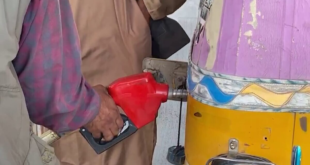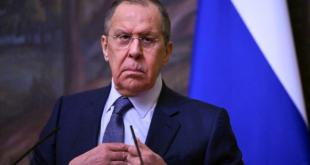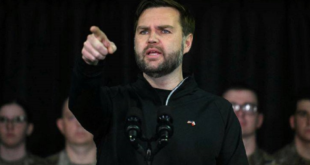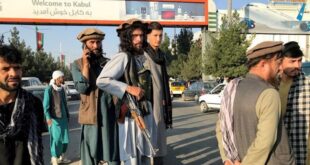Although NATO commanders in Afghanistan say Taliban insurgents are on the run, there are signs that the resolve of key ISAF nations is flagging in the face of a task that could take decades and has already cost the lives of many soldiers. Germany, Canada, and the Netherlands lead the ranks of the increasingly doubtful.
KANDAHAR, September 20, 2007 (RFE/RL) — Paradoxically, the Taliban insurgents’ greatest strength is not their military prowess. It is the air of quiet menace and constant danger they manage to create around Western troops whenever those troops leave their secure compounds in Kandahar, Helmand, Uruzgan, or other restive southern provinces.
NATO troops are good at combating an enemy making a stand, something they proved in late 2006 when they cleared the Zhari and Panjawayi districts southwest of the city of Kandahar of a huge Taliban presence. But fighting an elusive enemy rooted in local communities and adept at waging guerrilla warfare is a different matter. Here, boundaries are blurred and objectives become hazy. At the same time, Western publics are becoming increasingly more difficult to convince that the fight in Afghanistan is worth the cost.
As a result, agonizing domestic debates are in progress in a number of key International Security and Assistance Forces (ISAF) allies, threatening to terminate or seriously curtail their involvement in Afghanistan.
Privately Worried
ISAF officials privately admit they are very worried, but officially they cannot be seen to dictate national policy to sovereign allies. Thus, ISAF’s second in command in its Regional Command South, Canadian Brigadier General Marquis Hainse, could only appeal to the allies’ sense of duty in a September 13 interview.
“I will not take a stance on where Canada, where Germany, or where the Netherlands will go,” he said. “I will leave that to the political masters to deal with [because] it is clearly their domain. What I will say, though, is that we value the contribution of all nations here — 37 of them are participating — NATO [and] non-NATO [allies]. We hope that the nations that have contributed knew what they were getting into when they committed to this mission, and we certainly hope that they will stick to their commitments, whatever that commitment might end up to be in terms of contributions at the end of the day.”
Hainse himself hails from French-speaking Quebec, where the debate over Canada’s deployment in Afghanistan is the fiercest. Canada’s government has threatened to pull out combat troops in 2009 if no political consensus can be reached within the nation. On September 18, Afghan President Hamid Karzai appealed to Ottawa to stay beyond that date, saying that Afghanistan won’t be ready to secure peace within its borders by then.
Canada — with its 2,500 soldiers — bears the brunt of responsibility for ISAF’s presence in the difficult Kandahar Province. It has lost 70 men and its public is questioning the wisdom of departing from the country’s long-standing aversion to the use of force to secure peace.
Romania, which has contributed more than 600 soldiers in the neighboring province of Zabul, has been shaken by the loss of five soldiers since the beginning of their deployment last year. The dusty roads of that picturesque province are among the most dangerous in the country.
In equally difficult Uruzgan Province, the Netherlands — ISAF’s lead country there — may soon remove or halve its presence of 2,000 troops. NATO is already informally seeking a replacement country to lead in that province.
Haunted By Srebrenica
The resolve of the Dutch soldiers in Uruzgan is not in question. ISAF officials say the 1995 massacre by Serbs of 8,000 Bosnian-Muslim men and boys at Srebrenica — which was allowed to happen as Dutch peacekeepers stood by — has left deep scars on the Dutch military, spurring it to do its utmost to avoid a repeat tragedy. But the Dutch public is not convinced the presence of their troops continues to serve a useful purpose.
And then there is Germany. Though it is currently not deployed in the south, it is one of the largest contributors, with more than 3,000 soldiers in the north of Afghanistan. It is also ISAF’s best hope for plugging the holes in the south. But Germany’s 20th-century history means its public is wary of fighting foreign wars. NATO commanders in Afghanistan are having to tread a fine line. They must keep up the morale, and with it the impression that the some 40,000 troops they currently have in Afghanistan are enough to subdue a ragtag army of a few thousand Taliban fighters.
On the other hand, Hainse admits they could do with more men in the south.
“We could use more troops in the south, clearly. [Which is] not to say that we cannot cope with what we have,” he said. “But if we had more troops, we could probably cover more ground more quickly and that would help and that would alleviate some of the concerns.”
Part of the problem is that NATO’s 40,000 men are sufficient to win ground but not to hold it. Ideally, the Afghan National Army should take care of that, but it remains too weak. Thus, John Craddock, NATO’s senior military commander, put in a request for two extra battalions this month. Any defections from among the ranks of ISAF allies already in Afghanistan would increase that need.
‘Why We Came In The First Place’
When asked what the governments in countries whose resolve is wavering should do, ISAF officials routinely suggest they could make a better job of persuading their publics of the importance of succeeding in Afghanistan. Responding to a question from a Romanian journalist, Brigadier General Hainse took the same line.
“It’s not just about convincing the Romanians,” he said. “It’s for all of the nations to realize why we came here in the first place. We came here in the first place because Afghanistan [was] a failed state after 30 years of conflict, [a] breeding ground for terrorists; terrorist activity that doesn’t stop at the borders of any country. This is probably the most convincing argument. So, that’s why in the first place they committed to this mission — because they realized there was a threat. [And that] threat is still there.”
So, paradoxically, NATO must argue that despite all of its success over the past six years, the Taliban remains a formidable threat. And that after six years of massive ISAF assistance, the government of Afghanistan remains very weak.
Like most ISAF officials, Hainse is extremely reluctant to talk about how long it could take ISAF to accomplish its mission in Afghanistan.
More intriguing, however, is the reaction of ISAF officials to questions on what “mission accomplished” would look like in Afghanistan. One leading official — speaking privately — said most Western governments would be content if Afghanistan in 20 years approximated today’s Bangladesh.
Hainse’s thoughts seem to travel along similar paths. Asked if he could ever foresee his successors giving soldiers recreational leave in Kandahar, he said that when that day arrives, it will be time for NATO to leave.
www.rferl.orgÂ
Check Also
The Taliban’s House Of Cards: A Regime Riven By Factionalism And Failures – OpEd
When the Taliban seized control of Afghanistan in August 2021, the world watched with bated …
 Eurasia Press & News
Eurasia Press & News



